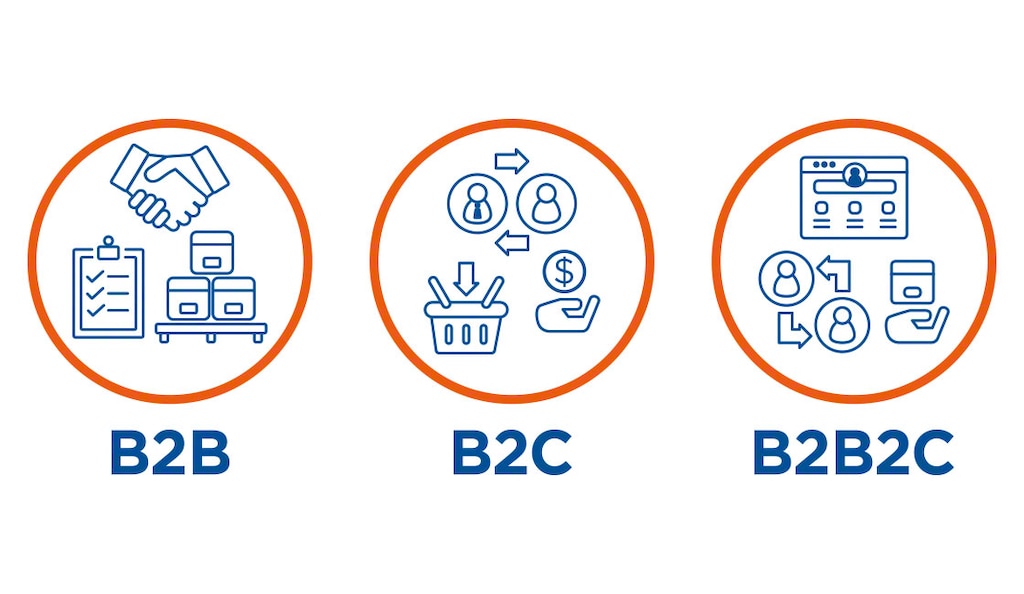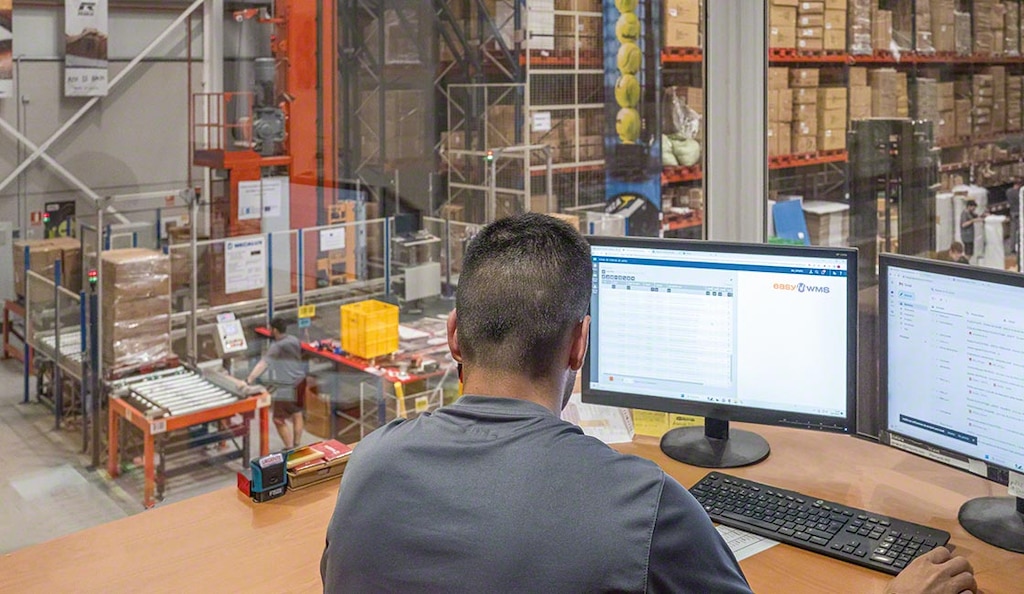
B2B2C model: Advantages and examples
B2B and B2C sales have given rise to a new way of reaching customers. But what’s the meaning of B2B2C?
What is B2B2C?
B2B2C (business-to-business-to-consumer) is a model in which companies reach their customers through a second company or intermediary with which they have an agreement or partnership. With this arrangement, the organizations work together to serve the end customer, allowing each to focus on what it does best. Furthermore, the original business and the consumer can interact directly, despite the involvement of the other company.
| Acronym | Definition |
| B2B | Transactions between two businesses |
| B2C | Sales from businesses to consumers |
| B2B2C | Collaboration between two partners to provide goods or services |
B2B2C often involves retailers or online stores. However, it can also include partnerships between manufacturers and logistics or courier service providers. B2B2C considers the end customer throughout the process, from production to sales and after-sales.
Why migrate to a B2B2C model?
The main reason the B2B2C model is becoming more relevant is its scalability. Collaborating with other organizations multiplies growth opportunities without sacrificing service levels or compromising internal operations. These agreements can be beneficial in several scenarios. One example would be a startup seeking to leverage an existing partner’s database.

What does a B2B2C relationship entail?
For a B2B2C project or e-commerce model to succeed, the associated enterprises must maintain open communication, allowing them to capitalize on their collective knowledge and access each other’s consumer base.
Another reason organizations are interested in this setup is brand recognition. When entering the market, partnering with an established firm provides a competitive advantage. However, this collaboration requires managing several aspects as a team:
- Sharing certain data to develop an omnichannel strategy with customers.
- Combining advertising efforts to showcase products and services.
- Maintaining a clear distinction between both companies despite their joint work.
Advantages and disadvantages of a B2B2C business model
Although it’s not a one-size-fits-all strategy, B2B2C can be highly beneficial for certain organizations:
- By increasing their sales channels, brands can reach their target audience more easily.
- Startups can accelerate their growth by advertising their products on B2B2C marketplaces.
- These businesses can also leverage their partners’ credibility in making themselves known.
Properly managing a B2B2C relationship requires coordination on aspects such as the need to share inventory availability and pricing. This can be achieved seamlessly by using a warehouse management system like Interlake Mecalux’s Easy WMS.
How to apply a successful B2B2C model
B2B2C can be most advantageous for organizations with these characteristics:
- Willingness to negotiate. Embarking on a B2B2C relationship with another company calls for aligning the interests of both parties. These businesses will share customers and profits, so they need to be compatible.
- Products suitable for direct sales. Heavily regulated and highly specialized items are not a good fit for this model, as they’re not typically sold to consumers.

B2B2C examples
The B2B2C strategy is widespread in today’s business landscape. These are some B2B2C examples:
- Numerous platforms have stores where second-tier companies sell products directly to their customers through e-commerce logistics.
- More and more supermarkets offer the option to shop online, with a partner delivering the products to customers’ homes.
- The same applies to restaurants and other types of organizations that use delivery platforms to reach their customers.
Implications of the B2B2C model in logistics
Users are demanding when it comes to how they receive their orders, and B2B2C logistics is no different. Supply chain management is critical in this business model, as it involves coordinating multiple suppliers and partners to ensure excellent service for end customers.
To meet consumer demands, it’s best to have real-time inventory visibility across all channels and automatically determine which facilities, points of sale, or 3PL providers are best equipped to prepare shipments, especially when managing high daily order volumes. This is where distributed order management systems are particularly helpful, as they can establish prioritization rules and order routing.
Transition to B2B2C with Interlake Mecalux
Are you looking to configure order allocation rules and gain a global view of inventory across your warehouses, stores, and nodes? At Interlake Mecalux, we can help you automate your omnichannel distribution. Easy DOM lets you segment shipments by client type and create specific prioritization rules. These capabilities make the software ideal for any organization with more than one warehouse, store, or 3PL provider. Easy DOM also integrates with ERP, WMS, and third-party software for full company coordination. Feel free to contact us for more information on this and other logistics and storage solutions — without obligation.
